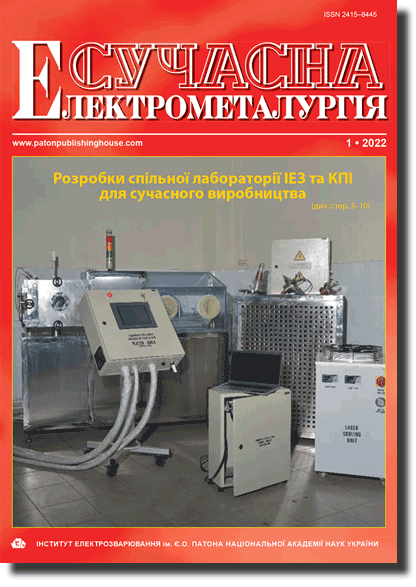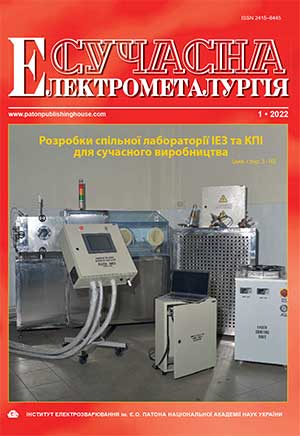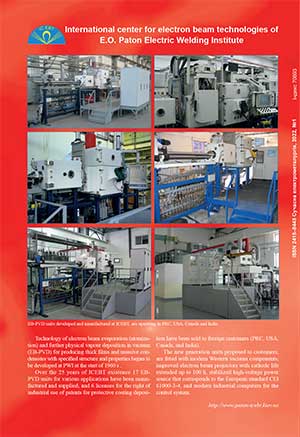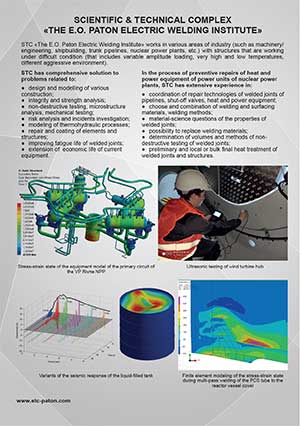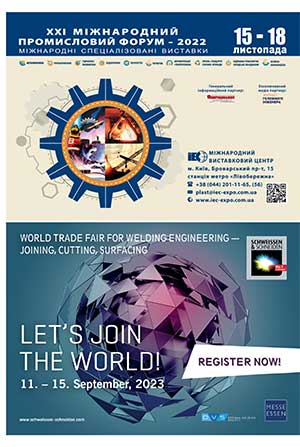Access for download PDF files for subscribers and for reviewers of scientometric bases.
Organization: Elsevier for content access(PDF files of journals released before 2024 are available for download from the website's archives))
Organization: Elsevier for content access(PDF files of journals released before 2024 are available for download from the website's archives))
| 2022 №01 (02) |
DOI of Article 10.37434/sem2022.01.03 |
2022 №01 (04) |
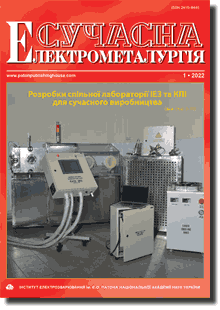
"Suchasna Elektrometallurgiya" (Electrometallurgy Today), 2022, #1, 24-33 pages
Formation of the zone of joining the layers in a composite ingot, surfaced by the electroslag process with liquid metal, for power turbine rotors
G.O. Polishko, G.P. Stovpchenko, V.A. Kostin, A.Yu. Tunik, L.O. Lisova, L.B. Medovar
E.O. Paton Electric Welding Institute of the NAS of Ukraine. 11 Kazymyr Malevych Str., Kyiv, 03150, Ukraine. E-mail: office@paton.kiev.ua
Abstract
The paper describes the possibilities for application of ESP with liquid metal for producing round steel ingots dissimilar along their height (length) with a minimized zone of mixing of different steels by regulated pouring of liquid metal of the specified chemical composition into the current-conducting mould. The extent, composition and structure of the thus formed transition zone were studied. Thermodynamic analysis of phase stability diagrams for Fe‒C‒Cr subsystem was used as the base to determine the heat treatment mode to avoid formation of critical defects in the metal structure of the joint of a composite ingot from 38KhN3MFA and 12Kh13 steels. It was established that in the steel joint zone formation of a structure with an acceptable hardness level is ensured at up to 0.9 °C/s cooling rate in the electroslag process with liquid metal that guarantees absence of the risk of cold cracking or fracture. Metallographic studies of the microstructure in the joint zone of composite ingot samples after heat treatments (HT1 and HT2) showed that in both the cases this zone has the structure of fine lamellar tempered martensite with a more uniform grain size that that without heat treatment. Ref. 13, Table 1, Fig. 12.
Keywords: electroslag process with liquid metal (ESP LM); composite ingot; joint zone; thermokinetic diagrams; heat treatment; microhardness; grain size
Received 17.01.2022
References
1. (1981) Electroslag metal. Ed. by B.E. Paton, B.I. Medovar. Kiev, Naukova Dumka [in Russian].2. Mitchell, A., Smailer, R. (1979) Practical aspects of electroslag remelting technology. Int. Metals Reviews, 24(5), 231-264. https://doi.org/10.1179/imtr.1979.24.1.231
3. Mitchell, A., Bellentajn, A.S. (1983) Factors influencing crystallization and temperature of ingots during ESR. Electroslag remelting. Issue 6. In: Proc. of Int. Conf. on Vacuum Metallurgy and Electroslag Remelting. Kiev, Naukova Dumka, 192-198 [in Russian].
4. Volchenkov, E.A., Medovar, L.B., Stovpchenko, A.P. et al. (2017) Review of furnaces of electroslag remelting for producing large-sized forge ingots. Teplotekhnika, Energetyka ta Ekologiya v Metalurgii. Dnipro, Nova Ideologiya, 241-246 [in Russian].
5. Tsykulenko, A.K., Lantsman, I.A., Chernets, A.V. et al. (2000) Bifilar circuit of consumable electrode electroslag remelting. Problemy Spets. Elektrometallurgii, 3, 16-20 [in Russian].
6. Medovar, L.B., Tsykulenko, A.K., Chernets, A.V. et al. (2000) Study of influence of ESR bifilar circuit parameters on dimensions and shape of metal pool. Ibid., 4, 3-7 [in Russian].
7. Kajikawa, K., Ganesh, S., Kimura, K. et al. (2007) Forging for advanced turbine applications: Development of multiple alloy rotor forging for turbine application. Ironmaking & Steelmaking. Processes, Products and Applications, 34(3), 216-220. https://doi.org/10.1179/174328107X174690
8. Makhnenko, V.I., Medovar, L.B., Kozlitina, S.S., Dzyubak, L.I. (2012) Producing by ESR LM method of large-section billet, heterogeneous in length, with a minimum transition zone. Sovrem. Elektrometall., 2, 3-7 [in Russian].
9. Medovar, L., Polishko, G., Stovpchenko, G. et al. (2018) Advanced ESR LM for two-layer composite ingot manufacturing for heavyweight rotors. In: Proc. of 3rd Inter. Conf. on Advances in Metallurgical Processes and Materials (10-13 June 2018, Lviv, Ukraine).
10. Medovar, L. Polishko, G., Stovpchenko, G. et al. (2018) Electroslag refining with liquid metal for composite rotor manufacturing. Archives of Materials Sci. and Eng., 91(2), 49-55. https://doi.org/10.5604/01.3001.0012.5489
11. Medovar, B.I., Saenko, V.Ya., Medovar, L.B. (2000) Producing of corrosion-resistant bimetal billets by electroslag cladding method. Problemy Spets. Elektrometallurgii, 2, 3-7 [in Russian].
12. Paton, B.E., Medovar, L.B. Shevchenko, V.E. et al. (2000) Electroslag technology in manufacture of bimetal products. Sovrem. Elektrometall., 2, 5-11 [in Russian].
13. Paton, B.E., Medovar, L.B., Saenko, V.Ya. (2004) About prospects of bimetal production using electroslag process. Advances in Electrometallurgy, 3, 5-9.
Advertising in this issue:
The cost of subscription/purchase order journals or individual articles
| Journal/Currency | Annual Set | 1 issue printed |
1 issue |
one article |
| TPWJ/USD | 384 $ | 32 $ | 26 $ | 13 $ |
| TPWJ/EUR | 348 € | 29 € | 24 € | 12 € |
| TPWJ/UAH | 7200 UAH | 600 UAH | 600 UAH | 280 UAH |
| AS/UAH | 1800 UAH | 300 UAH | 300 UAH | 150 UAH |
| AS/USD | 192 $ | 32 $ | 26 $ | 13 $ |
| AS/EUR | 180 € | 30 € | 25 € | 12 € |
| SEM/UAH | 1200 UAH | 300 UAH | 300 UAH | 150 UAH |
| SEM/USD | 128 $ | 32 $ | 26 $ | 13 $ |
| SEM/EUR | 120 € | 30 € | 25 € | 12 € |
| TDNK/UAH | 1200 UAH | 300 UAH | 300 UAH | 150 UAH |
| TDNK/USD | 128 $ | 32 $ | 26 $ | 13 $ |
| TDNK/EUR | 120 € | 30 € | 25 € | 15 € |
AS = «Automatic Welding» - 6 issues per year;
TPWJ = «PATON WELDING JOURNAL» - 12 issues per year;
SEM = «Electrometallurgy Today» - 4 issues per year;
TDNK = «Technical Diagnostics and Non-Destructive Testing» - 4 issues per year.





